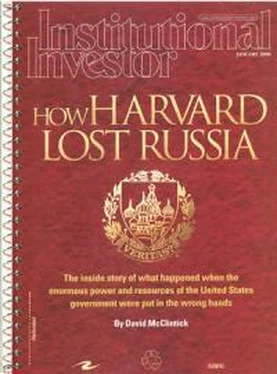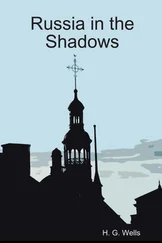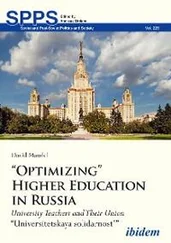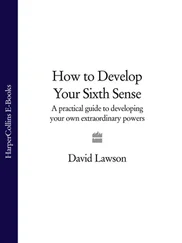Even more dubious, according to Williamson, was Soros's July 1997 purchase of 24 percent of Sviazinvest, the telecommunications giant, in partnership with Uneximbank's Vladimir Potanin. It was later learned that shortly before this purchase Soros had tided over Yeltsin's government with a backdoor loan of hundreds of millions of dollars while the government was awaiting proceeds of a Eurobond issue; the loan now appears to have been used by Uneximbank to purchase Norilsk Nickel in August 1997. According to Williamson, the U.S. assistance program in Russia was rife with such conflicts of interest involving H.I.I.D. advisers and their U.S.A.I.D.-funded Chubais allies, H.M.C. managers, favored Russian bankers, Sorosand insider expatriates working in Russia's nascent markets ...
Despite exposure of this corruption in the Russian media (and, far more hesitantly, in the U.S. media), the H.I.I.D.-Chubais clique remained until recently the major instrument of U.S. economic aid policy to Russia. It even used the high-level Gore-Chernomyrdin Commission, which helped orchestrate the cooperation of U.S.-Russian oil deals and the Mir space station. The commission's now-defunct Capital Markets Forum was chaired on the Russian side by Chubaisand Vasiliev, and on the U.S. side by S.E.C. chairman Arthur Levitt Jr.and Treasury Secretary Robert Rubin.
Andrei Shleiferwas named special coordinator to all four of the Capital Markets Forum's working subgroups. Hebert, Hay's girlfriend, served on two of the subgroups, as did the C.E.O.s of Salomon Brothers, Merrill Lynch and other powerful Wall Street investment houses. When The Nation contacted the S.E.C. for information about Capital Markets, we were told to call Shleifer for comment. Shleifer, who is under investigation by U.S.A.I.D.'s inspector general for misuse of funds, declined to be interviewed for this article. A U.S. Treasury spokesman said Shleiferand Hebert were appointed to Capital Markets by the Chubais group--specifically, according to other sources, by Dmitry Vasiliev."
Several problems with Harvard academic advisors behavior during Russian privatization program were outlined by Adil Rustomjee (Yale University) in the letter to Johnson’s Russia List :
From: Arustomjee@aol.com (Adil Rustomjee)
Date: Thu, 6 Aug 199813:18:14 EDT
Subject: Role of foreign advisers in the Russian Privatization Program.
From: Adil Rustomjee, Yale University, 135 Prospect Street, New Haven, CT 06511
Email: adil.rustomjee@yale.edu
Dear David,
Many thanks for your superb news service. Johnson's Russia List is fast becoming an excellent resource for those who work, who have worked on, or who just share a fascination with that disturbing country. I am writing this letter to humbly suggest a research topic that should be of great interest to JRLs readers. It is a subject that deserves better treatment than that received to date. The topic itself is the exact role of foreign advisers in the Russian Privatization Program.
It is a marvelous tale waiting to be plainly told. The Russian Privatization Program, despite its subsequent vilification, ranks as one of the great experiments at social engineering in the twentieth century. It attempted an authoritative allocation of property rights - and consequently of power - within society on a scale never attempted before. It is therefore a very significant historical process, more significant in the long reach of events than even Stalin's collectivization campaigns of the 1930s. It deserves its own Robert Conquest.
The process itself went through two distinct phases - the voucher phase, and what for want of a better word, we call the "loans for shares" phase. It is the "loans for shares" phase of the program that has attracted the most attention, primarily because of its spectacular abuse by Russia's oligarchs. The real story is in the first voucher stage of the process and the dubious principles it was based on.
The entire voucher program was a product of foreign economic advice. Consider the basic timeline. The Soviet Union itself was dissolved in December 1991. In June 1992, the crucial document governing the voucher privatization effort came out - the State Privatization Program. This seminal document outlined the basic concepts behind the voucher phase of the program. It also rationalized what became a state sponsored giveaway of Russia's national patrimony to the country's managers. The implementation of the State Privatization Program document took a little over two years. By June 1994, Anatoly Chubias , Russia's privatization chief, was announcing the end of the voucher program. In a scant two years, Russia had gone from a communist country with no private sector, to a country with a private sector - that on paper at least - was larger than Italy's !!! Such progress could never have been possible without substantial foreign economic advice. It is a commonplace that privatization is essentially a "learning by doing" process.
Russia could never have gone through a learning curve in such a short time span. Its reformers basically rubberstamped a scheme conceived by Western economists in the crucial 6 month period between December 1991 and June 1992.
Yet despite this, the precise story of the economists behind the entire effort has not been told. Good attempts have been made by Janine Wedel and Anne Williamson - and I will discuss them later - but from a technical standpoint, the story has yet to be told well.
Who were these advisors and what did they achieve? Three groups of actors may be identified - academic economists, bureaucrats from the World Bank, and Western consulting firms. A close examination of the interaction between these three groups itself will offer interesting insights into the birth and dissemination of ideas. For the major ideas behind the Russian program came from a group of academics - many associated with Harvard. These ideas were picked up in the early years and became established "transition economics" orthodoxy at the World Bank. The substantial implementation of the basic ideas was carried out by consulting firms like the Big Six working (often) on USAID contracts.
This is as it should be. Academia is usually the source of the most original thinking on economics. International bureaucrats - particularly those associated with the World Bank - are surprisingly timid and cautious people. They are institutionally incapable of boldness - and great audacity was called for in the Russia of 1992.
Was this boldness misplaced? I believe it was. A rational examination of the process will, I suspect, lead to a damning indictment of Russia's foreign advisors. They created desolation and called it reform. The defining feature of the program was based on remarkably dubious ideas. Foremost among these was the belief that privatization was a series of payoffs - or bribes, as one of its leading advocates, Harvard's Andrei Shleifer, called it - to various " stakeholders" in the program. Given an uncertain legal environment and some
appropriation of state assets by these stakeholders, - euphemistically referred to as "spontaneous privatization" - , better to legalize what was believed to be a trough feeding frenzy. This was the program's dominant idea.
There is little empirical evidence from the early years about the exact extent of " spontaneous privatization". Anecdotal evidence abounds, especially from many near - hysterical accounts of the early 90s but the actual empirical evidence is slender. The decisions to sell a great nation's patrimony - a one shot historical phenomenon with irreversible long range implications - were basically conceived within a six month time frame by a bunch of frightened foreigners, using dubious assumptions, with little basis in empirical understanding. Astonishing.
Читать дальше






![Джонатан Димблби - Barbarossa - How Hitler Lost the War [calibre]](/books/385421/dzhonatan-dimblbi-barbarossa-how-hitler-lost-the-w-thumb.webp)





